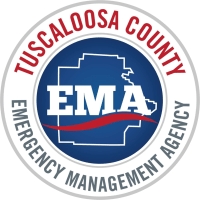
The State of Alabama is now collecting information from homeowners in Tuscaloosa County for damage that occurred from the (Date Event Type) event.
The information collected is the first step in the damage assessment process. Your information will not be shared with anyone outside of the Individual Assistance program. Filling out the form allows Tuscaloosa County EMA to be able to quickly submit your damages to the State of Alabama and/or the Federal Government. Tuscaloosa County EMA will contact you to schedule a time to visit your property to get a more detailed report if you meet the required Individual Assistance (IA) parameters.
If you need assistance completing the form, please contact Tuscaloosa County EMA at 205-349-0150 during our regular business hours.
We are open Monday through Friday, 8:30 a.m. -5:00 p.m.
***FILLING OUT THIS FORM DOES NOT GUARANTEE YOU WILL RECEIVE ASSISTANCE***
Click here for Residential Damage Assessment Form
Click here for Business or Agricultural Damage Assessment Form
Some things you, your household and/or business should consider after a disaster:
- Contact your insurance company.
- Take photos or videotape the damage.
- Account for all damage-related costs.
- Conduct salvage operations. Separate damaged from undamaged property
- Take an inventory of damaged property (damaged property and goods should be kept on hand until the insurance adjuster assesses the damage).
- Assess the value of the damaged property and the financial impact of your business interruption.
- Protect undamaged property by making temporary repairs (see Protection of Salvageable Assets).
- Keep a log of critical events indicating who did what, when, why and how.
- Keep detailed records of all expenditures.
Managing Business Insurance Claims
- Click here for more information about how to manage a business insurance claim after a disaster.
Individual Assistance
FEMA provides Individual Assistance (IA) to eligible individuals and households who have sustained losses as a direct result of a disaster that receives a federal disaster declaration. There is no threshold or trigger that automatically authorizes IA. Federal assistance is intended to supplement—not supplant—local and state government’s response and recovery efforts. Thus, the governor of an affected state must request that the President declare an emergency or major disaster authorizing IA. Using information submitted by the governor in his/her major disaster declaration request, FEMA evaluates specific factors to determine whether there is a need for supplemental federal assistance to individuals (i.e., IA). FEMA then provides a recommendation to the President, who has sole discretion to authorize a declaration that provides IA (the declaration approval may limit the types of IA that are authorized).
- Homeowners and renters in officially designated counties who sustained damage to their homes, vehicles, personal property, businesses or inventory may apply for disaster assistance.
- Assistance can include grants to help pay for temporary housing, emergency home repairs, uninsured and underinsured personal property losses, and medical, dental and funeral expenses caused by the disaster, together with other serious disaster-related expenses.
- Disaster assistance grants are not taxable income and will not affect eligibility for Social Security, Medicaid, medical waiver programs, welfare assistance, Temporary Assistance for Needy Families, food stamps, Supplemental Security Income, Social Security Disability Insurance or any other federal benefits.
U.S. Small Business Administration
As a FEMA partner, the U.S. Small Business Administration (SBA) offers low-interest disaster loans to businesses of all sizes, nonprofits, homeowners and renters. SBA disaster loans are the primary source of federal long-term disaster recovery funds for disaster damages not fully covered by insurance or other compensation. They do not duplicate benefits of other agencies or organizations.
Public Assistance
Public Assistance (PA) can fund the repair, restoration, reconstruction or replacement of eligible public (roads, bridges, government buildings) or certain nonprofit facilities or infrastructure damaged or destroyed by a disaster.
- FEMA will provide a reimbursement grant of at least 75% of eligible costs, with the state and local governments sharing the remaining 25%. Eligible public entities include state governments, local governments and any other political subdivision of the state, recognized tribes and U.S. territories. Certain private nonprofits such as schools, utility companies, irrigation systems, emergency, medical, and rehabilitation operations, houses of worship and temporary or permanent custodial-care facilities are potentially eligible to get assistance.
- Although funds are awarded to government entities and private nonprofits, the PA program is intended to benefit everyone in the affected community by helping to restore the community after a disaster.
